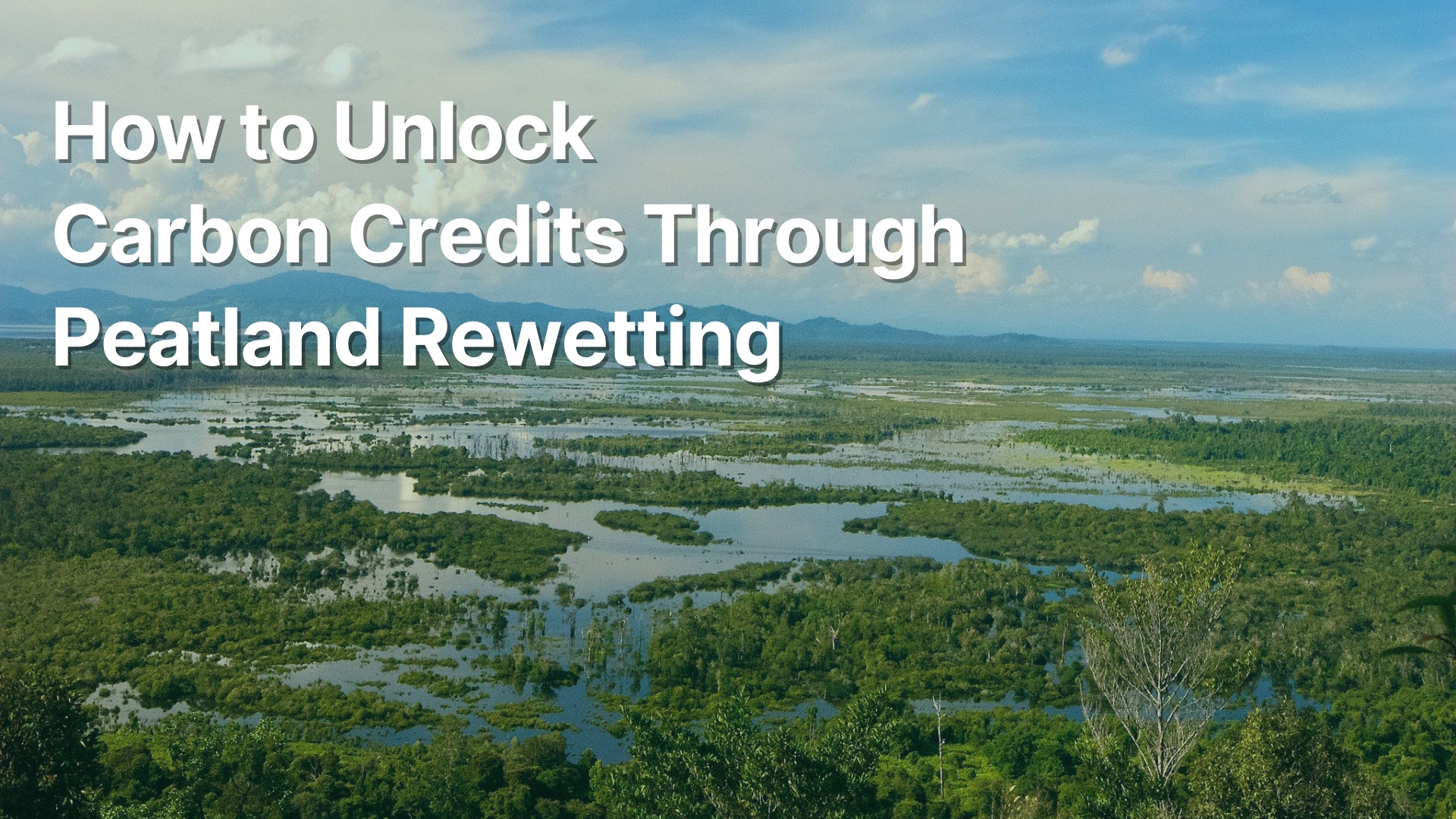Unlocking Carbon Credits Through Peatland Rewetting
Others

How restoring peatlands helps fight climate change and generate carbon credits
🌍 Why Is Peatland Rewetting Crucial for Climate Action?
Peatlands are one of the world’s most powerful carbon sinks — they store more carbon per hectare than any other ecosystem. But when these lands are drained for agriculture or development, they release massive amounts of CO₂, contributing significantly to global emissions.
Dry peat is highly flammable and prone to wildfires, especially during droughts intensified by climate change. These fires not only accelerate carbon emissions but also damage biodiversity and local livelihoods. Rewetting peatlands restores their natural water levels, reduces fire risk, and locks carbon safely underground — making it a critical nature-based solution (NBS) for climate mitigation.
💧 How Does Peatland Rewetting Work?
Rewetting peatlands involves restoring the water table close to the peat surface. This is typically done by:
-
Blocking drainage systems like canals, ditches, and gullies.
-
Building structures (e.g., bunds, blocks, stilt-rooted trees) to slow water outflow.
-
Removing degraded topsoil to reach a stable peat layer.
-
Reintroducing native wetland vegetation like Sphagnum moss.
Materials for bunds can vary — from decomposed peat to wood, straw, plastic, and sandbags. The goal is to allow water to spread evenly while minimizing erosion and maximizing moisture retention.
🌿 Can Peatland Rewetting Generate Carbon Credits?
Yes — rewetting projects can issue verified carbon credits by reducing emissions from drained peatlands. Several international methodologies support this:
-
VM0027 by Verra: For tropical peatland rewetting.
-
VM0036 by Verra: For temperate and boreal peatlands.
-
MoorFutures: A pioneering peatland-based carbon standard developed in Germany.
One of the earliest projects in Kieve Polder, Germany, is projected to remove 38,655 tons of CO₂ over 50 years — proving that peatland restoration is both ecologically effective and economically viable through carbon markets.
💡 Want to explore more about decarbonization and carbon project development? Visit our Insights page and follow us on LinkedIn to stay informed on the latest in climate solutions and the voluntary carbon market. 🌳

